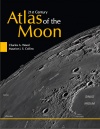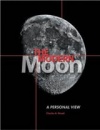Difference between revisions of "May 4, 2014"
(Created page with "__NOTOC__ =Pkt Worms= <!-- ws:start:WikiTextHeadingRule:0:<h1> --> <!-- ws:start:WikiTextLocalImageRule:6:<img src="/file/view/LPOD-May4-14.jpg/506260436/LPO...") |
|||
| Line 2: | Line 2: | ||
=Pkt Worms= | =Pkt Worms= | ||
| − | + | <!-- ws:start:WikiTextHeadingRule:0:<h1> --> | |
| − | + | <!-- ws:start:WikiTextLocalImageRule:6:<img src="/file/view/LPOD-May4-14.jpg/506260436/LPOD-May4-14.jpg" alt="" title="" /> -->[[File:LPOD-May4-14.jpg|LPOD-May4-14.jpg]]<!-- ws:end:WikiTextLocalImageRule:6 --><br /> | |
<em>Plots from [http://www.hou.usra.edu/meetings/lpsc2014/pdf/2679.pdf Andrews-Hanna and colleagues, LPSC]</em><br /> | <em>Plots from [http://www.hou.usra.edu/meetings/lpsc2014/pdf/2679.pdf Andrews-Hanna and colleagues, LPSC]</em><br /> | ||
<br /> | <br /> | ||
| Line 11: | Line 11: | ||
<br /> | <br /> | ||
<hr /> | <hr /> | ||
| − | |||
| − | |||
| − | |||
| − | |||
Revision as of 01:01, 3 January 2015
Pkt Worms

Plots from Andrews-Hanna and colleagues, LPSC
These three color data images are centered on the PKT, the Procellarum KREEP Terrane, the most radioactive-rich region of the Moon and the region where most lunar maria occur. Jeffrey Andrews-Hanna and colleagues include these maps in their abstract from the recent Lunar and Planetary Science Conference. Map a shows gravity gradients (with blue areas where the gravity value most rapidly changes. Imbrium is the near-center light blue circle, and Serenitatis, Crisium and Nectaris are deeper blue circles to the right. This map includes a number of lunar worms that outline the PKT. They can be better seen in plots b and c as black lines segments. Chart b shows topography with blues being low, and chart c displays thorium, which is the main geochemical marker for the PKT. Andrews-Hanna and colleagues propose that these dark lines are lava-filled crustal fractures that fed magma from the mantle to form many of the nearside maria. The rectangular distribution of these lines/fractures is nearly the same as the surface structures Ewen Whitaker long ago used to defined the the giant Procellarum impact basin, but the Andrews-Hanna team proposes that that basin doesn't exist. I wish I had been at their LPSC presentation for I am not convinced that the dark lines are not a deep manifestation of the Procellarum Basin, rather than fractures due to thermal expansion and contraction of lunar crust and mantle. The dark lines - the worms - are real, their interpretation may yet evolve.
Chuck Wood



